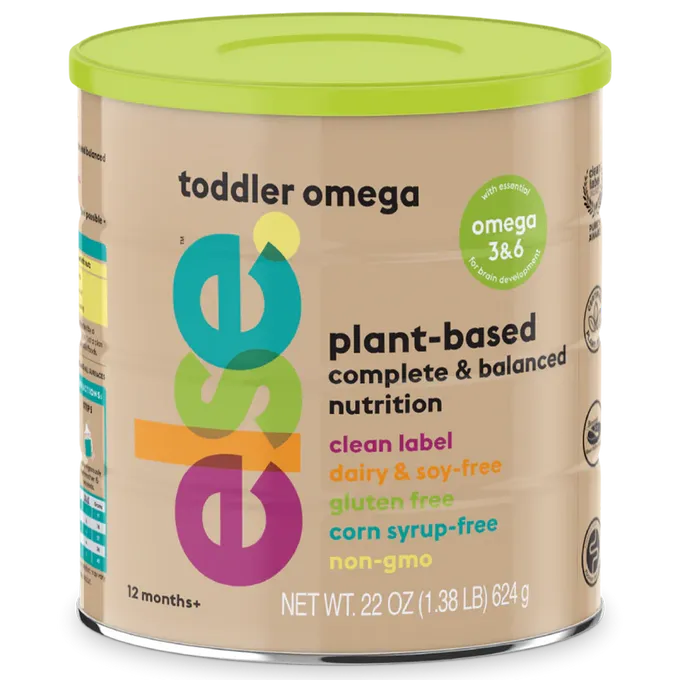Effective Strategies to Stop Breastfeeding: Gentle Transition Tips for Mother and Child
Published May 6, 2024

Wondering when and how to stop breastfeeding? You’re not alone. Transitioning from breast milk to other forms of nutrition is a significant step for both mother and child. In this article, we’ll explore effective strategies to ensure a gentle transition, addressing the physical and emotional considerations that come with this change.
From timing your decision to managing milk production and emotional well-being, we provide advice and tips for a smooth cessation of breastfeeding. Read on to learn how to navigate this phase with confidence.
Key Takeaways
Gradual weaning is most recommended as it allows mother and baby to adjust physically and emotionally; however, personalized methods like ‘don’t offer, don’t refuse’ and partial weaning can also be effective in easing out of breastfeeding.
Engorgement and discomfort during weaning can be managed through expression, cold compresses, and avoiding tight clothing; for emotional changes, self-care and finding new bonding activities can help mothers cope.
Supplementing with bottles and formula feeding is part of the transition, and lactation consultants can offer tailored support throughout the process, including relactation if desired.
Deciding When It's Time to Stop Breastfeeding
Various factors can influence your decision to start weaning your baby off breast milk. Perhaps, it no longer feels emotionally or physically beneficial for you and your child, or maybe a medical condition nudges you towards this decision, highlighting the need to stop breastfeeding. Even societal norms and health organization recommendations play a significant role in this choice.
The World Health Organization, for instance, recommends exclusive breastfeeding for six months, followed by continued breastfeeding up to two years and beyond along with suitable complementary foods.
The American Academy of Pediatrics echoes similar sentiments, advising exclusive breastfeeding for around six months, supplemented by solid foods, and continued breastfeeding for at least the first year.
Different forms can represent the process of stopping breastfeeding. Gradual weaning over weeks or months is the method most recommended by health experts. It allows your body to adjust to producing less milk and gives your baby time to adapt to other sources of nourishment. That said, there may be specific medical or personal reasons that necessitate stopping breastfeeding suddenly - a process known as ‘lactation suppression’. However, this abrupt change can lead to engorged breasts and a confused baby. Therefore, if possible, a gradual halt to breastfeeding is always advisable for a comfortable transition for both mother and baby.
Tailoring Your Weaning Approach
Each mother and child’s journey towards stopping breastfeeding is unique, as should be the approach adopted. A one-size-fits-all strategy doesn’t exist, but a few tried-and-true methods can guide your path. One such approach is the ‘don’t offer, don’t refuse’ method. It’s a gentle way of weaning where you only nurse when your child shows interest, and you don’t initiate breastfeeding yourself. This method gives your baby control over the process, which can reduce resistance and emotional turmoil.
Another effective approach is partial weaning. It’s a balanced routine where a caregiver provides bottle feeding during the day, and you breastfeed when available. This strategy allows for a smooth transition that accommodates the family’s routines and needs.
Whether you choose the ‘don’t offer, don’t refuse’ method, partial weaning, or any other approach, remember that the goal is to make the weaning process as seamless and comfortable as possible for both you and your baby.
Gradual Weaning: Step by Step ->
Gradual weaning involves incremental steps, rather than a sudden leap. The process involves slowly phasing out nursing sessions, replacing them with other activities, and introducing solid foods. This step-by-step approach ensures a smooth transition for both mother and baby, avoiding negative side effects such as engorged breasts and confusion for the baby.
Now, let’s delve deeper into the nuances of this process, from easing out of nursing sessions to transitioning to solid foods and adjusting milk production naturally.
Easing Out of Nursing Sessions
Initiating the gradual weaning process begins with easing out of nursing sessions. Here are the steps to follow:
Begin by replacing the baby’s least favorite feeding with a bottle or cup.
Wait several days or even weeks before substituting another session.
By doing this, you’re giving your baby ample time to adjust to the new routine.
Another effective strategy is to change daily routines to avoid nursing in common situations or times. Substituting past nursing periods with new activities and involving other family members to take over routines associated with breastfeeding can facilitate this transition. You can also gradually shorten the duration of breastfeeding sessions or delay them with distractions. During this phase, your child might resist the changes, but providing comfort and closeness can help them adjust.
Lastly, don’t forget to use the ‘don’t offer, don’t refuse’ strategy as necessary, ensuring a gentle and gradual transition from breastfeeding.
Transitioning to Solid Foods
Once you start easing out of nursing sessions, begin introducing solid foods into your baby’s diet. Around the age of six months, you can start with small portions of pureed vegetables, fruits, or iron-rich foods like fortified cereals, meats, or legumes. While solid foods are being incorporated, breast milk or formula should remain the primary source of nutrition until at least 12 months. In addition, small amounts of water can be introduced using a sippy cup from around this age.
A balanced diet for your baby is crucial, so strive to include foods from all five food groups—vegetables, fruits, grains, meats, and dairy—without adding sugars or salts. By the age of 9 to 12 months, your baby can start self-feeding with finger foods and should be transitioning towards eating solid food, the same healthy family foods by their first birthday, avoiding spicy or hard-to-chew items.
As your baby approaches 12 months and you’re considering weaning off breastfeeding or infant formula, you may want to try our Else Toddler Formula to help with the transition.
Adjusting Milk Production Naturally
Your body’s milk production will naturally start to adjust as you phase out breastfeeding sessions and introduce solid foods. However, managing this change can sometimes be a bit tricky. Natural methods to manage and reduce milk production include intermittent expression to relieve discomfort and wearing supportive bras to avoid stimulating excess milk production. These practices can help maintain a comfortable milk supply with just a little breast milk without causing engorgement.
Aside from these techniques, some mothers turn to herbal remedies to help reduce their breast milk supply naturally. Herbs such as sage, jasmine, and parsley can be effective in this regard. However, if you’re considering medicinal and supplemental methods like taking Sudafed, using Vitamin B, or certain birth control pills, it’s essential to consult with a doctor first.
Keep in mind, the aim of adjusting milk production is to facilitate a comfortable and gradual transition away from breastfeeding, preventing discomfort and engorgement.
Managing Engorgement and Discomfort ->
Sometimes, mothers may need to stop breastfeeding abruptly due to medical conditions, medication, or other health concerns, leading to engorgement and discomfort. Physical discomforts such as engorgement, plugged ducts, and mastitis can occur during the weaning process, especially if breastfeeding is stopped abruptly. It’s crucial to be aware of these potential issues to manage them effectively. Symptoms such as blocked ducts, pain, or flu-like symptoms may indicate infections like mastitis and require medical attention. Strategies to minimize breast discomfort during the weaning process include expressing milk to relieve fullness, applying cold compresses, and using over-the-counter pain relievers for soreness and engorgement. If significant milk production continues weeks after weaning, or signs of mastitis develop, it is imperative to consult a doctor promptly.
Let’s explore some practical ways to relieve engorged breasts and prevent blocked milk ducts.
Relieving Engorged Breasts Without Excess Milk Production
During the weaning process, engorged breasts can cause substantial discomfort. Nevertheless, there are strategies to mitigate this discomfort without encouraging excess milk production. Applying a cold or ice pack to the breasts can provide symptomatic relief from engorgement and help to reduce swelling. Additionally, wearing a comfortable and supportive bra can soothe the discomfort associated with engorged breasts during the weaning process.
Sometimes, the pressure from engorgement can become too unbearable. In such cases, gently hand expressing or pumping a small amount of milk can provide relief without significantly increasing milk supply. If the discomfort becomes too intense, over-the-counter medications such as acetaminophen or ibuprofen can be taken to manage engorgement pain, as long as they are used according to a doctor’s instructions. Remember, relief from engorgement is crucial for a comfortable weaning process.
Recognizing and Preventing Blocked Milk Ducts
During the weaning process, blocked milk ducts can be a frequent issue. They present as a firm area in the breast that remains even after pumping or breastfeeding. Infections such as mastitis and blocked milk ducts may develop with symptoms including redness, fever, and areas that do not soften. Recognizing these symptoms early on is crucial to prevent complications.
Preventing blocked milk ducts requires a bit of proactive effort. Here are some tips to help avoid milk accumulation and blockage:
Ensure that your baby drains each breast completely during breastfeeding sessions.
Avoid tight-fitting clothes that could apply pressure to the breasts.
Massage your breasts regularly to promote milk flow.
Apply warm compresses to your breasts before breastfeeding to help loosen any blockages.
If you feel a lump or notice any signs of a blocked milk duct, seek help from a lactation consultant or healthcare provider.
Remember, prevention is better than cure, especially when it comes to maintaining your comfort during the weaning process.
Emotional Considerations for Mother and Baby ->
Weaning can evoke a significant emotional transition for both mother and baby. Hormonal shifts during weaning can cause unease or anxiety in mothers, as well as mood changes from decreased prolactin and oxytocin levels. Mothers may also feel rejected or nostalgic as they cope with their baby growing older and the changing relationship during the weaning process.
Similarly, babies may miss the closeness they experienced with their mothers during breastfeeding. It’s essential to address these feelings to ensure the emotional well-being of both mother and baby. Let’s explore some ways to cope with these emotional changes and maintain the bonding and comfort between mother and baby.
Coping with Emotional Changes
Weaning can have a quite profound emotional impact. Mothers can experience a range of feelings, from sadness and guilt to relief and freedom. Engaging in self-care and mindfulness practices can help manage these feelings. This might include taking a relaxing bath, meditating, practicing yoga, or simply taking a few deep breaths throughout the day.
Some ways to cope with the weaning process include:
Seeking counseling or joining a support group to gain coping strategies and hear about other mothers’ experiences
Finding alternative ways to bond with the child, like cuddling, reading, or playing together
Remembering that it’s perfectly normal to have mixed feelings during the weaning process and taking some time to adjust
These strategies can help preserve the mother-child bond during weaning.
Maintaining Bonding and Comfort
Even though breastfeeding offers a unique bonding experience, numerous other methods exist to maintain closeness with your baby after weaning. Skin-to-skin contact is an effective method to provide comfort and maintain an emotional connection with your baby. You can simply hold your baby close to you, or you could try baby-wearing for extended periods of skin-to-skin contact.
In addition to this, dedicating extra time for cuddling and engaging in activities that both you and your baby enjoy can support the bonding process during the transition away from breastfeeding. Some activities you can try include:
Reading a favorite story together
Taking a walk in the park
Singing songs or playing music
Doing puzzles or playing games
Having a special bedtime routine
These activities can help create a sense of closeness and connection between you and your baby.
Remember, the emotional bond between breastfeeding mothers and their children can continue to be strengthened through various means, even once breastfeeding has ceased. For those who are able to, continue breastfeeding can also play a role in maintaining this connection.
Supplementing with Bottle and Formula Feeding ->
While you gradually wean your baby from breastfeeding, supplementing with bottle and formula feeding often becomes necessary. This transitional stage can be a big shift for both you and your baby, requiring patience and understanding. Thankfully, there are strategies to make this transition smoother, from introducing bottle feeding to choosing the right infant formula.
Introducing Bottle Feeding
Careful planning is required when introducing a bottle to a breastfed baby, as it’s a delicate process. Experts recommend introducing a bottle at around 3 to 4 weeks of age to ensure breastfeeding is well established before the bottle introduction. If you’re planning to return to work, consider beginning bottle-feeding a few weeks in advance to allow for proper adjustment.
For a smoother transition, initially replace one breastfeeding session with a bottle feeding, possibly after the baby has been partially breastfed. You can also consider having another caregiver introduce the bottle to reduce the baby’s expectation of breastfeeding from you. It may be beneficial if you’re not in the same room during initial bottle feedings, as babies can sense your presence, which may lead to refusal.
Remember, patience is key. If your baby resists the bottle, stop and try again later without forcing the bottle, to foster a positive bottle feeding experience.
Choosing Infant Formula
Selecting the appropriate infant formula can seem like a complex task. However, a few key factors can guide your decision. Protein size is a crucial consideration, as it impacts the digestibility and comfort for the baby. Most healthy infants will do well with a formula that has a lactose-based carbohydrate content, unless they have specific digestive issues.
Remember, every baby is unique, and what works for one might not work for another. If you’re uncertain, don’t hesitate to consult with a pediatrician or lactation consultant. They can provide personalized advice based on your baby’s needs and help you navigate this important decision.
Restarting Breastfeeding: Is It Possible?
You might have stopped breastfeeding but now wish to restart. Is it feasible? In short, yes! This process is known as relactation, and while it requires significant effort and patience, it’s entirely achievable. The interest in relactation has increased recently due to factors such as the infant formula shortage and updated breastfeeding recommendations.
Initiating relactation involves:
Consistently stimulating the breasts for 10 to 15 minutes each side, at least eight to 10 times a day
Hand-expressing milk in conjunction with pumping to boost milk production
Factors such as adequate sleep, hydration, and stress management are also important for successful relactation
The relactation process can be lengthy, taking several weeks or even months before a substantial milk supply is established
If your baby is reluctant to latch or drain the breast effectively, utilizing an electric breast pump for stimulation can be a suitable alternative. The key to restarting breastfeeding is providing the necessary stimulation to encourage milk production.
The Role of Lactation Experts
Remember, as you navigate the journey of stopping breastfeeding, you’re not alone. Lactation consultants are professionals trained to assist with breastfeeding, including weaning, to ensure a smooth transition for mother and child. Whether you face feeding obstacles or need help creating a personalized weaning plan, their expertise can be immensely helpful.
Certified lactation consultants conduct reviews of the parents’ and baby’s health history and observe breastfeeding to tailor advice and provide personalized plans for stopping breastfeeding. While in-person interactions with lactation experts are preferred, virtual consultations have also proven to be effective for some individuals. So, whether you’re just starting the weaning process or facing challenges along the way, don’t hesitate to reach out to a lactation expert. Their guidance can provide invaluable support and increase the likelihood of a successful and comfortable transition.
Summary
The journey of stopping breastfeeding is unique to each mother and baby. From deciding when it’s time to stop breastfeeding to managing the physical discomforts and emotional changes, each step has its own challenges and triumphs. Remember, whether it’s introducing bottle feeding, transitioning to solid foods, or even restarting breastfeeding, there’s no one-size-fits-all approach. It’s about finding what works best for you and your baby. And most importantly, don’t forget to reach out to lactation experts for support and guidance. You’re not alone in this journey. With patience, understanding, and a little help, you can navigate this transition smoothly, ensuring comfort and well-being for both you and your baby.
Frequently Asked Questions
When is the best time to stop breastfeeding?
The best time to stop breastfeeding is a personal decision and can depend on various factors, but health organizations like the World Health Organization recommend exclusive breastfeeding for six months, followed by continued breastfeeding up to two years and beyond along with suitable complementary foods.
What is the 'don't offer, don't refuse' method of weaning?
The 'don't offer, don't refuse' method of weaning involves only nursing when the child shows interest and not initiating breastfeeding. It's a gentle approach to weaning that respects the child's signals.
How can I prevent blocked milk ducts during weaning?
To prevent blocked milk ducts during weaning, make sure your baby fully drains each breast during feedings and avoid tight-fitting clothes. This can help prevent milk accumulation and blockage.
Can I restart breastfeeding after I have stopped?
Yes, you can restart breastfeeding after stopping. It's called relactation, and it involves consistent stimulation, patience, and professional support.
What role do lactation experts play in the weaning process?
Lactation experts play a critical role in the weaning process, providing personalized advice and plans for stopping breastfeeding, ensuring a smooth transition for both mother and child.
This article was reviewed by Kayla Bridges, DCN, MS, RD-AP. Kayla Bridges is Director of Medical & Scientific Affairs at Else Nutrition, North America.
The content and advice provided in this article is for informational purposes only and is not a substitute for medical diagnosis, treatment, advice for specific medical conditions. Always consult a pediatrician to understand the individual needs of your child. The article expresses the views of the brand editor.










